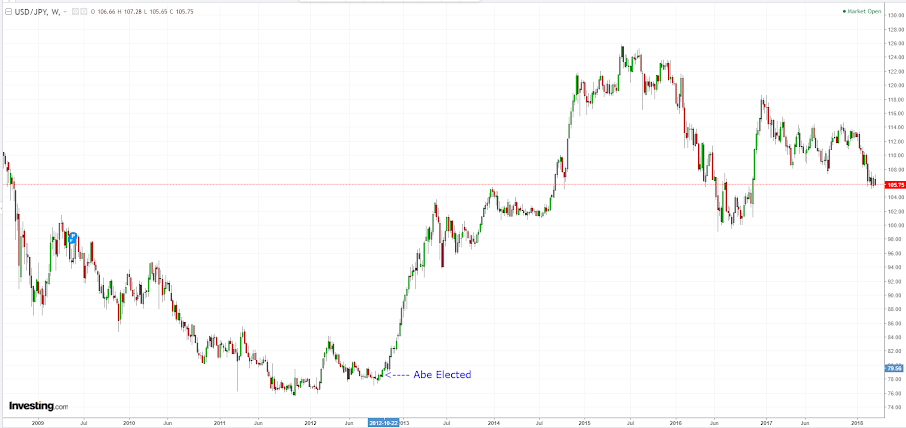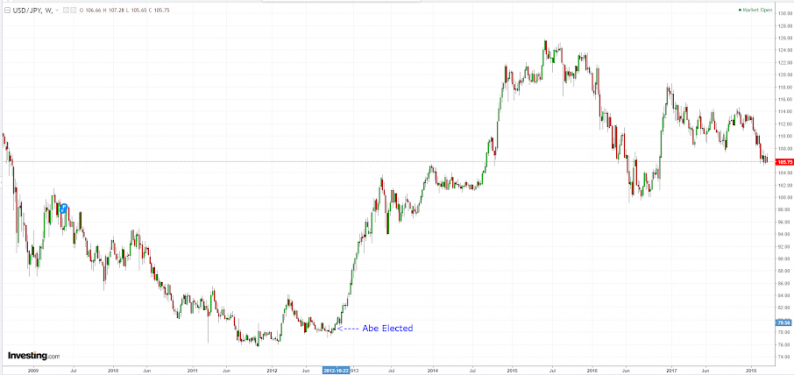Traditional Markets
It’s not often that we lead this section of the update with Japan but it is the world’s third-largest economy and they’re going through a bit of a rough patch which could potentially lead to some market movements that are worth highlighting.
Prime Minister Shinzo Abe is having a bad month right now. A suicide note left by a government official revealed that he was forced to rewrite several official documents to cover up the Prime Minister’s connection with a particular sale of land.
Though political analysts are saying that the Prime Minister himself is safe from the scandal, the Finance Minister Taro Aso is clearly in the thick of it and will be sitting out the above mentioned G20 meetings.
Why this matters to the markets
Abe and Aso, along with the Bank of Japan have been acting since 2012 to proactively devalue the Japanese Yen. A weak Yen policy is considered a cornerstone of ‘Abenomics’.
The idea is to keep the currency weak in order to promote exports. The weaker the Yen, the more foreigners will be able to afford products that are made in Japan. And with Japan exporting more than they import, this policy makes a lot of sense.
In this chart, we can see the Yen’s massive depreciation since Abe was elected in September 2012.
(Remember, this is the USDJPY pair so an upward movement on the graph indicates a weaker Yen.)

So far the Yen has been getting stronger, acting as a barometer of Abe’s dwindling popularity. Any progression in this saga can and likely will have a direct impact on these markets.
Therein Lies the Rub
The current UK investigation into the poisoning of a former Russian spy has brought the Russian Ruble into full focus.
In an unrelated matter, yesterday Donald Trump ended up slapping sanctions on Russia for their alleged meddling in the 2016 elections.
All this adds up to volatility in the USDRUB.
(As before, the chart going up means the Ruble getting weaker.)












Leave A Comment